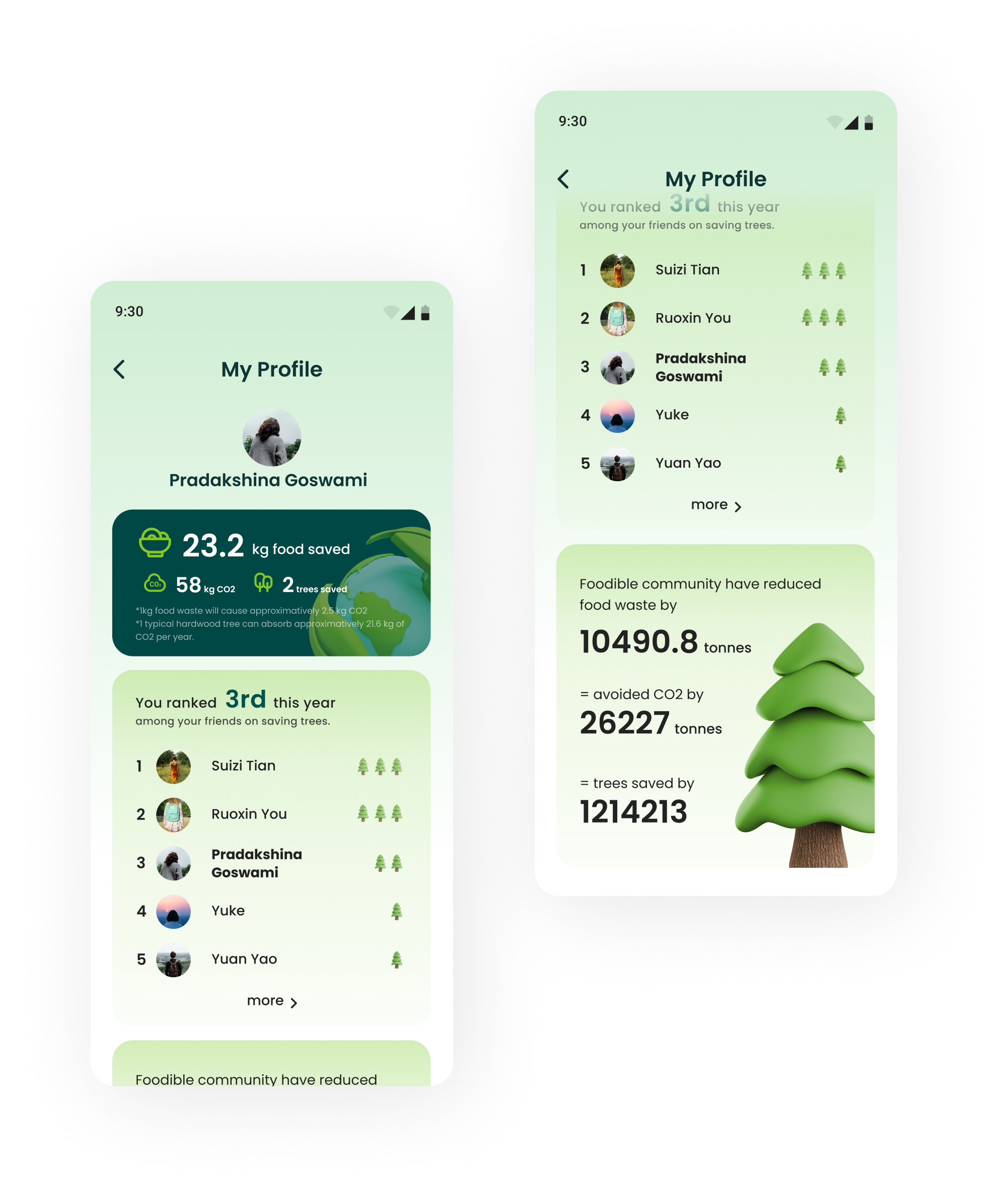Foodible
A software solution for food waste in single household.

| Project Timeline | Project Type | Contributor |
|---|---|---|
| Oct 2022 - Jan 2023 | Academic case study | Ruoxin You Suizi Tian Yuan Yao Yuke Zhang Padakshina Goswasmi |
Motivation
About 13 million tonnes of food goes to waste in the United Kingdom every year. The existing practices for consumption and production of food are far from desirable. The UN Sustainable Development Goal 12 targets to reduce food wastage at the retail and consumption stage by 50% through reduce, reuse, recycle strategy. This problem is multilevel and affected by farming practices, production, procurement, transportation, consumption, and so on.
Still, people do not have much awareness about the impact of their existing food practices on the environment. Several reliable estimates suggest that cereals and vegetables contribute to well-over 50% of wasted food in the UK. Our motivation was to reduce food waste by targeting a population that is generally not addressed by most existing food waste applications–single person households.
Background Research
| Liteature Review | Market Research |
|---|---|
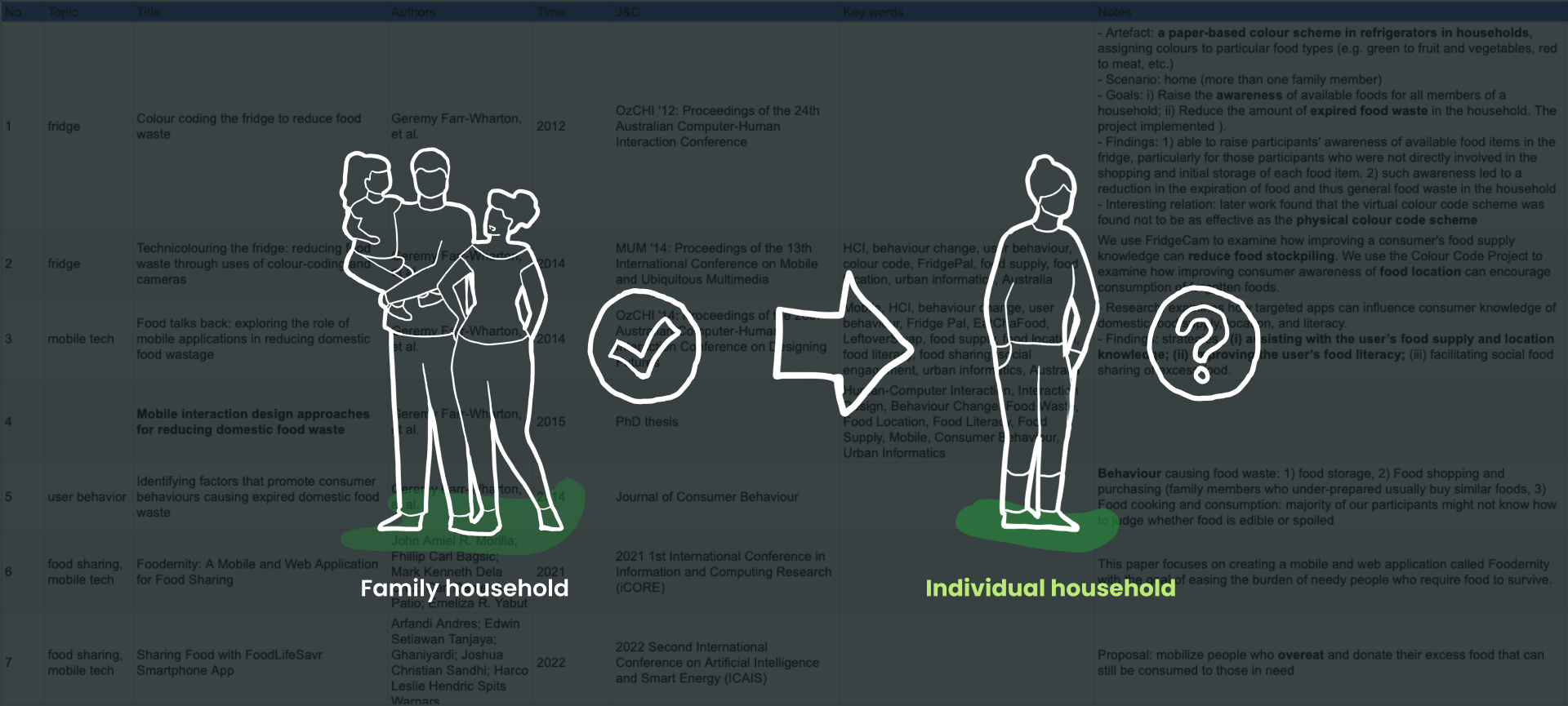 |
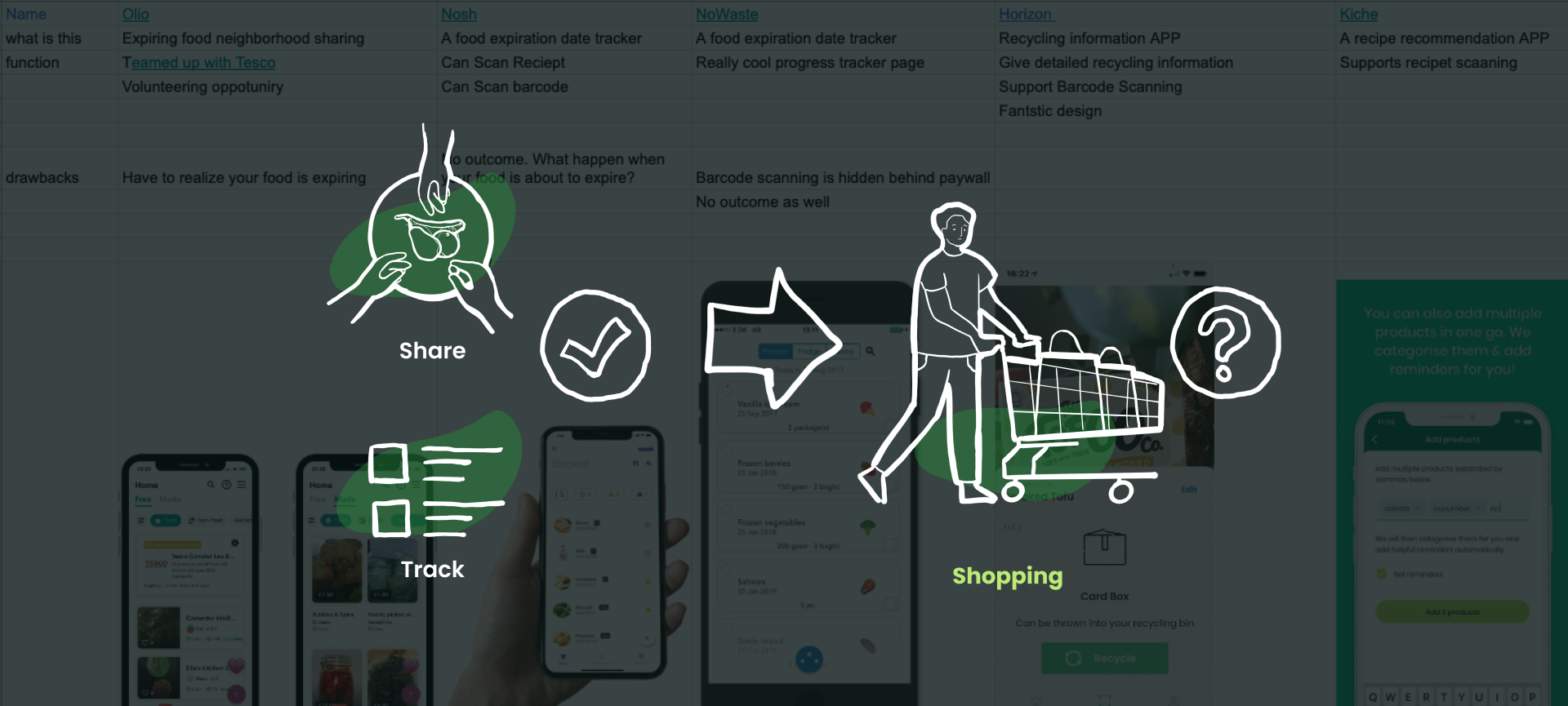 |
| Previous research mainly focus on family setting instead of individual households. | Existed apps address the food waste problem partly by expecting users to either reuse or recycle food. |
| Most proposed solutions intervened in food storage and consumption stages. Lack of them invesgated how to reduce overbuying during shopping. | The feedback about food nearing expiry wasn’t sufficient to trigger a response from the user. |
User Studies
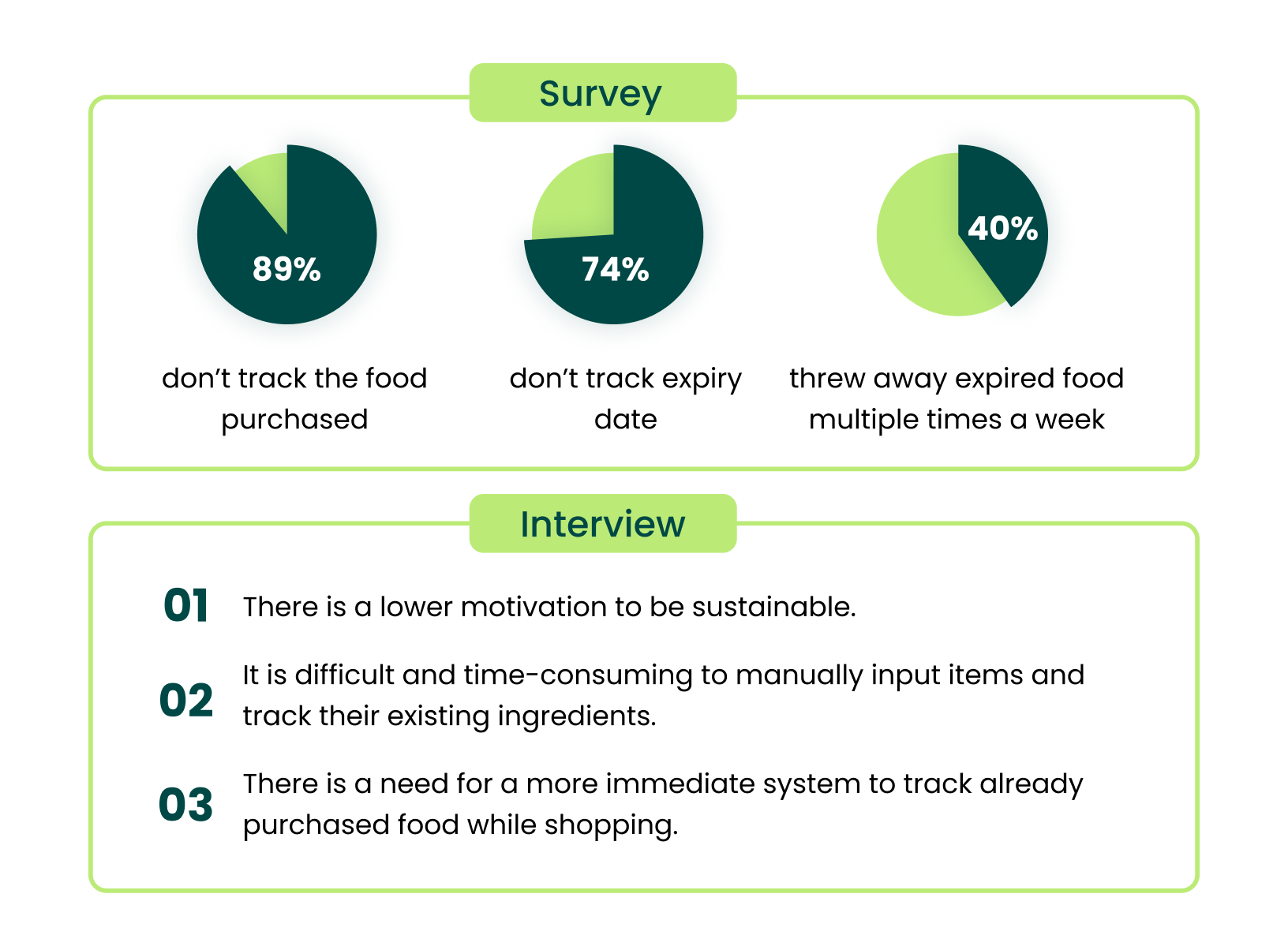
Define Problem
- Difficulty in identifying and tracking their own items in fridge-sharing situations leads to forgetting and wasting ingredients. This contributes to overbuying and ultimately results in food waste.
- Users prioritize pleasure over sustainability due to hedonistic tendencies, which leads to a lack of planning and checking of existing items before shopping. This behavior contributes to overbuying and food waste.
- Existing food management products are unhelpful and time-consuming for users, making it difficult to track food purchases and expiration dates. This contributes to the lack of motivation to keep tracking food storage. Define Problems
How might we design a user-friendly product that facilitates and motivates users to track and manage their food?
- Reminds users of repeated items when shopping and expired/about to expired products when cooking
- Motivates users to keep managing food
- Enables users to input purchased items without significant efforts
Ideation
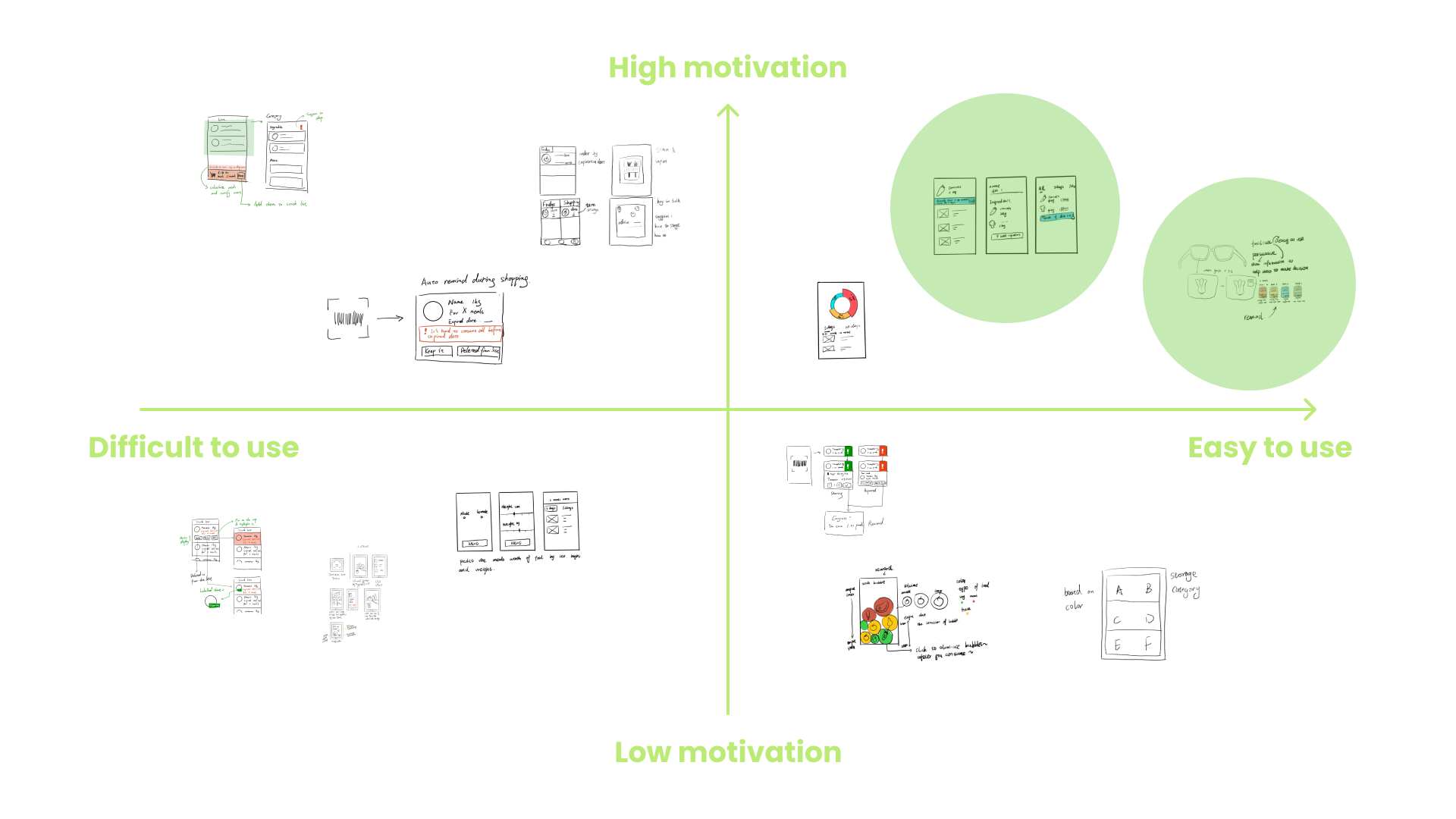
Prototype
Storyboard

Low-fidelity Prototype

Ver1 High-fidelity Prototype
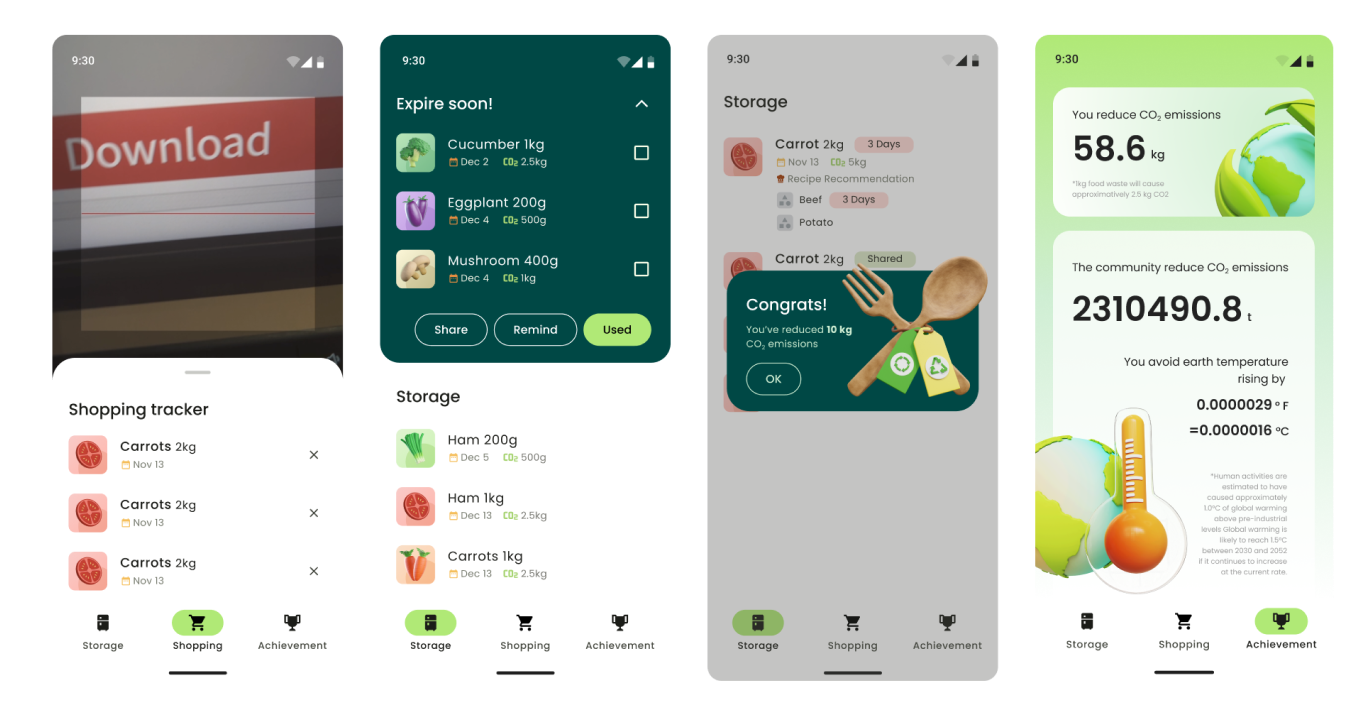
Android Application
We have developed the Ver1 of the Application for usability test.
Usability Tests
To evaluate if our design is accessible and useful in the real world, we conducted a usability test with six participants using our pilot mobile app. We coded the feedback and utilized an affinity map to categorize them. The findings mainly focused on the application functions:
- Interaction for consuming or sharing food items was unnatural and caused confusion
- Environmental contributions displayed on the achievement page are not relatable to individuals
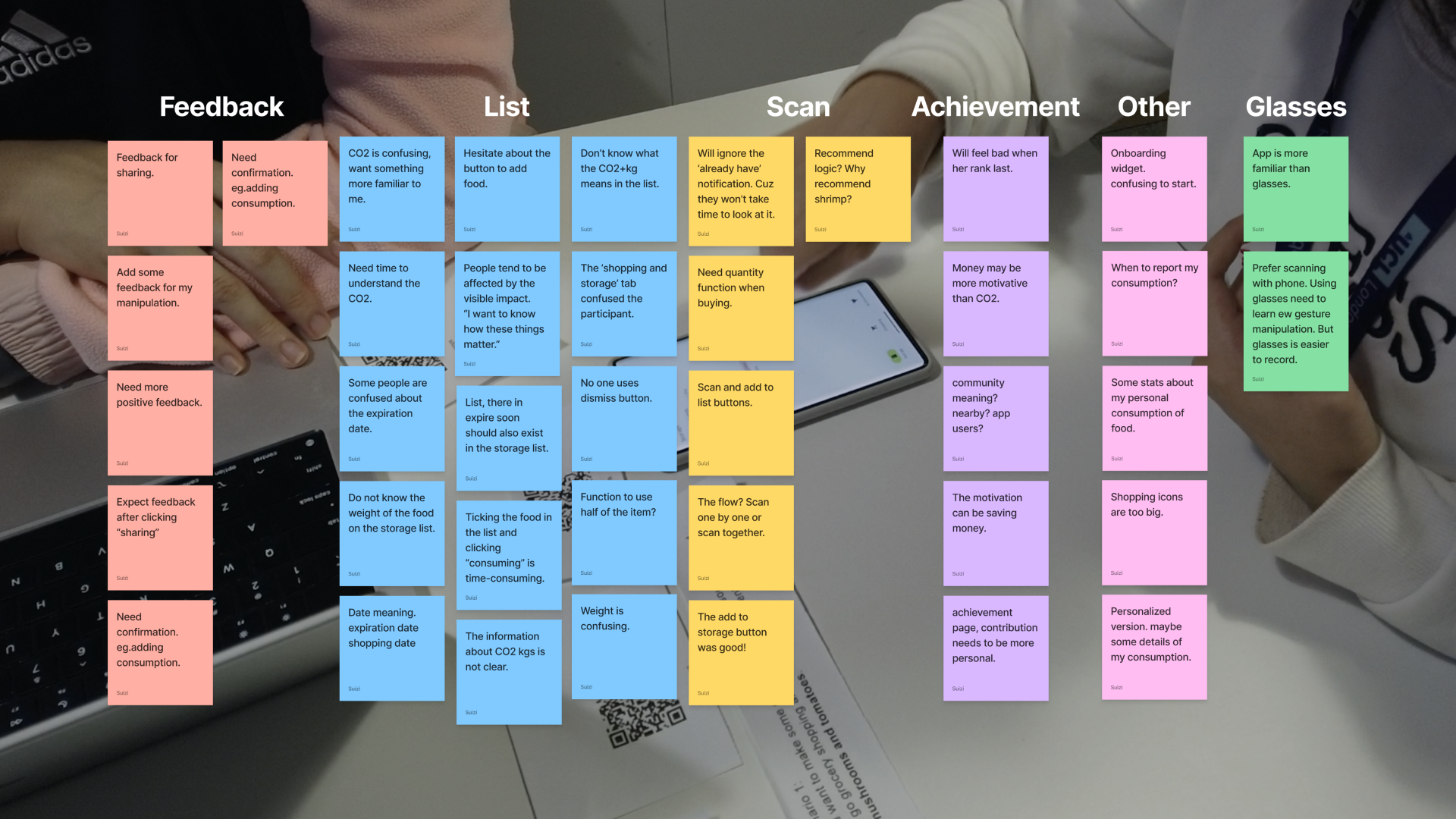
Final Design
Recording
- Scan to read
Users can scan and record food items while shopping. - Repeated item reminder
When a newly scanned food item overlaps with what already exists, the app automatically reminds the users by a ‘repeated’ tag and a substitution recommendation.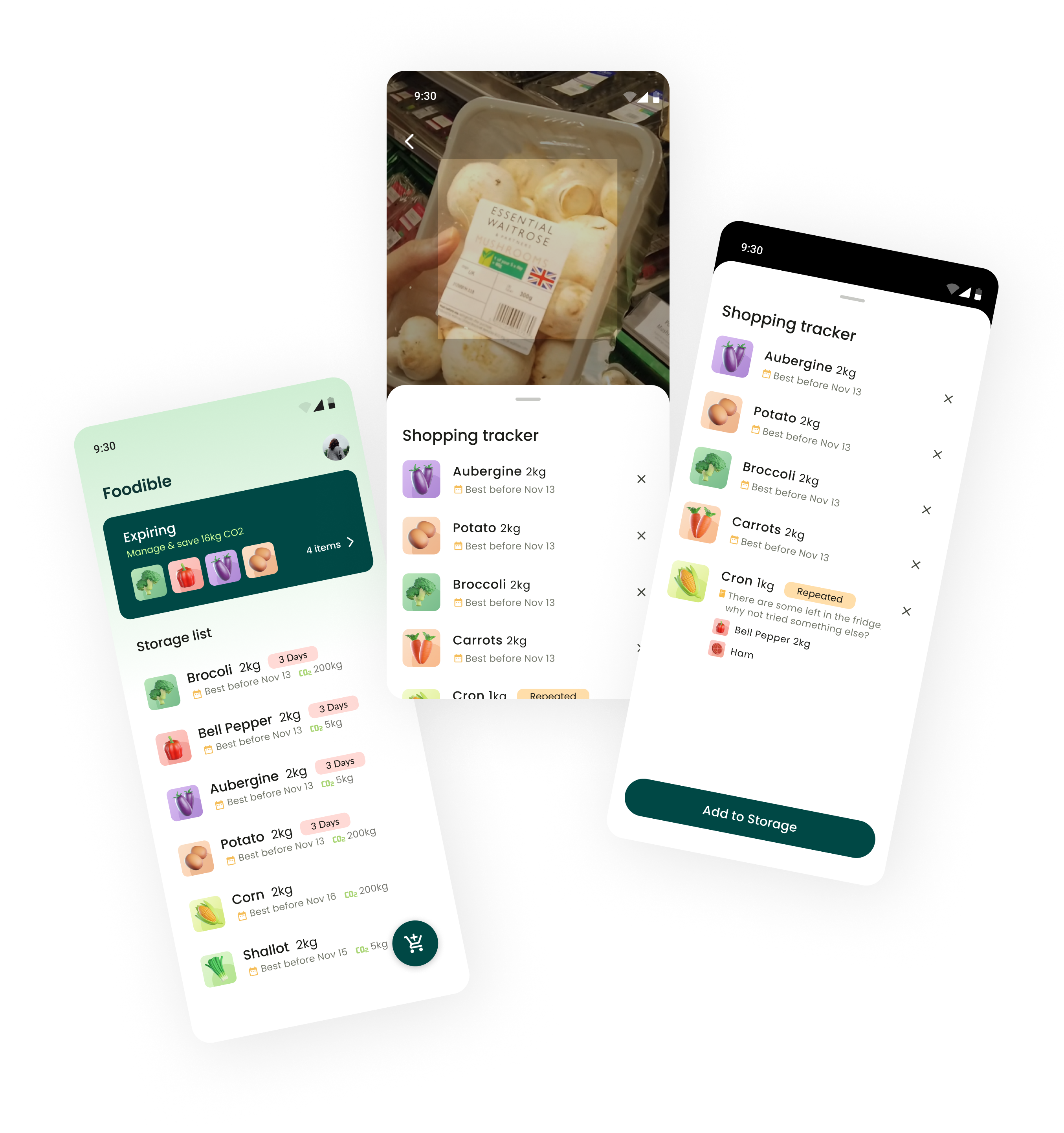
Tracking
- Expiring reminder
The application will automatically alert users through system pop-up notifications, the top card on the homepage, and countdown tags of the food items list items. - Expiring item process
The application provides three actionable alternatives to users: tagging it for immediate consumption, sharing it with others through the application, or setting another customized reminder. - Feedback
A pop-up will appear and display the total quantity of carbon dioxide saved when the users finish processing.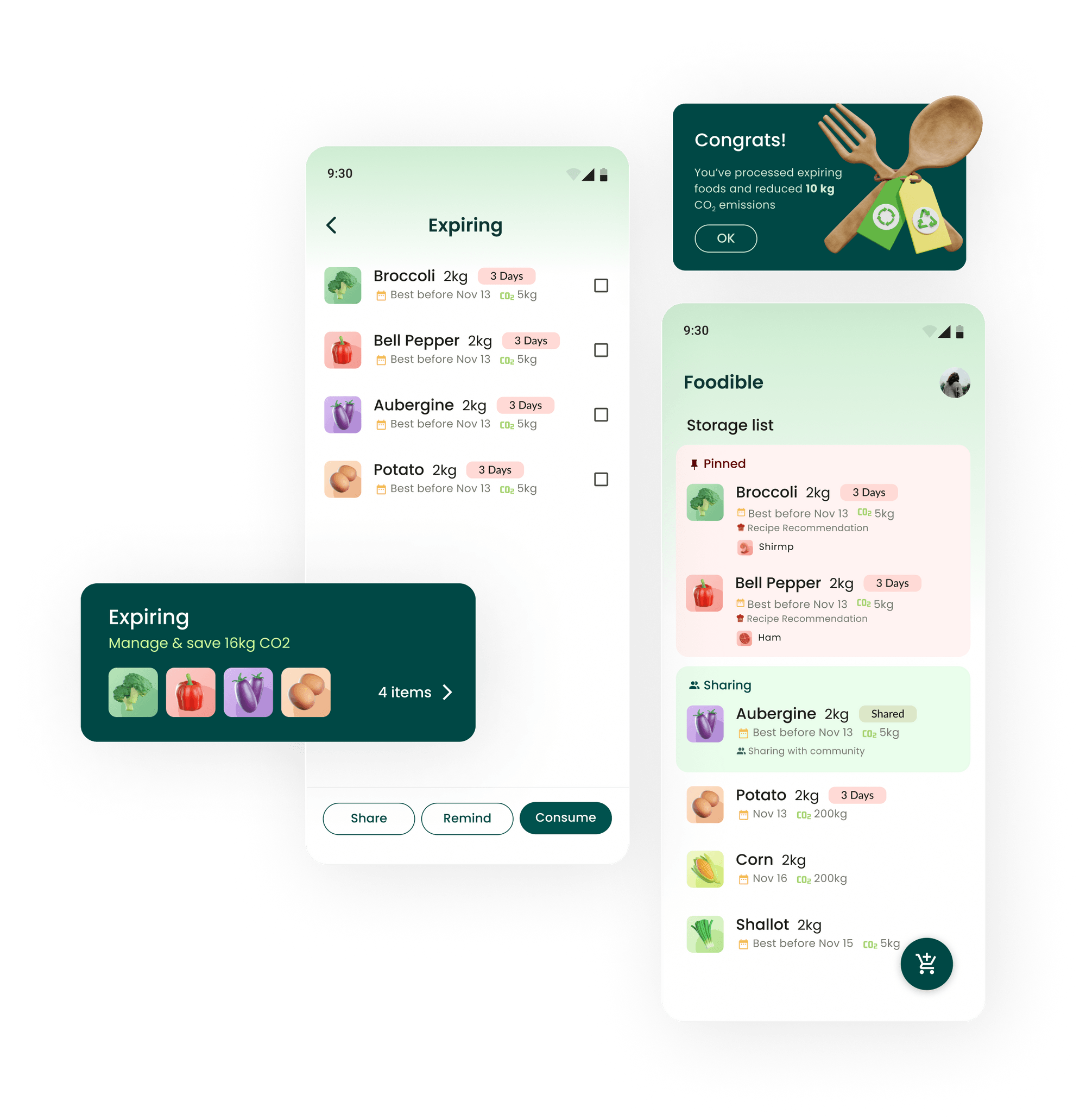
Achievement
- Personal contribution sum-up
The top sum-up card shows individual cumulative food savings, and the quantity of reduced carbon emission. - Leaderboard
The leaderboard conveys social presence to motivate users to pay attention to food waste. - Foodible’s contribution
A sum-up of the expected contributions from all Foodible users is presented at the end of the profile page